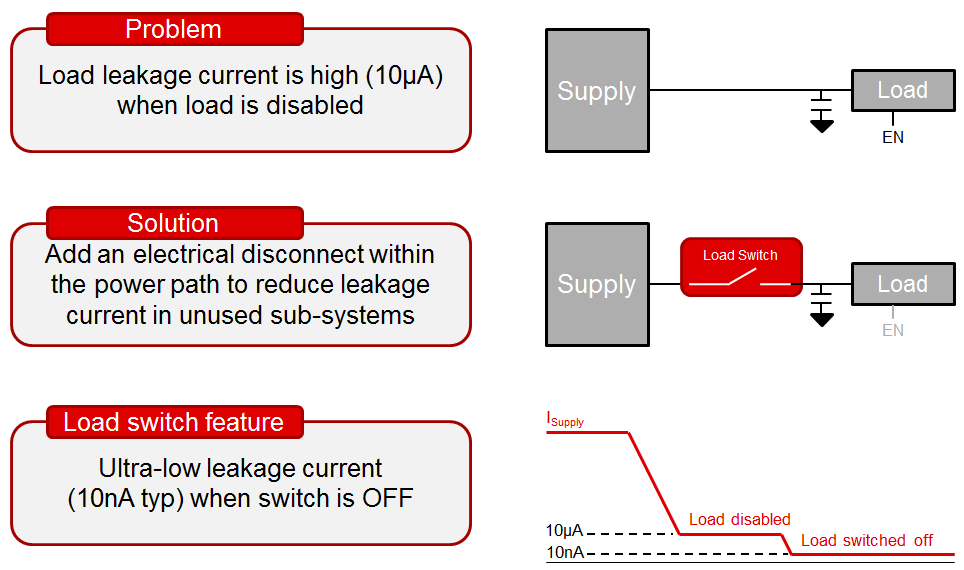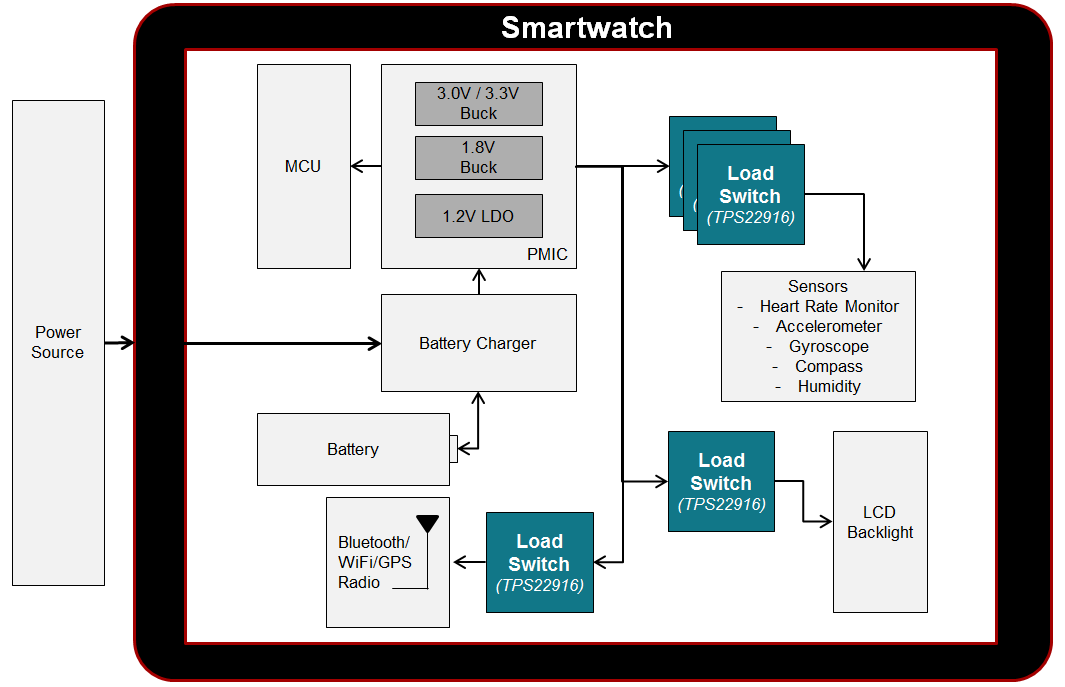SSZT764 march 2018 TPS22916

Let’s say that you’re a power electronics engineer and your boss has asked you to extend the battery life of your product. After optimizing the front-end power path (battery charger) and mid-rail converters (DC/DCs and low-dropout regulators [LDOs]), you believe there’s no room left to squeeze out a few more hours or days of battery life. You’re almost ready to report back that it’s impossible, but after taking a look in your toolbox, you find the solution: load switches.
One of the many ways that you can use a load switch is to reduce the shutdown current of any load. Do you have a Bluetooth® or Wi-Fi® module that consumes over 10µA in deep sleep or hibernation mode? Try adding a load switch like the TPS22916 in Figure 1, which can reduce the shutdown current to just 10nA.
 Figure 1 Reduce Shutdown Current by
Adding a Low-leakage Load Switch between the Supply and Load.
Figure 1 Reduce Shutdown Current by
Adding a Low-leakage Load Switch between the Supply and Load.In some applications, such as wearables, building automation or medical devices, there can be several sensors and wireless transmitters in a single product that load switches can disable. Figure 2 shows the system block diagram of a typical smartwatch and where load switches would be used in the power path.
 Figure 2 Smartwatch System Block
Diagram
Figure 2 Smartwatch System Block
DiagramTake an example of a smartwatch using a standard 3.7V lithium polymer battery with 65mAh of capacity. In order to last at least five days before charging (a typical work week), you need to leave certain sensors powered (like the step counter), but you can shut down other areas of the board, like the Bluetooth® module. If the Bluetooth® module draws 10µA when disabled, it is contributing to at least 10µA × 24 hours × 5 days = 1.2mAh of the 65mAh budget. In other words, this one module is contributing at least 1.8% (1.2mAh/65mAh) to overall battery-life loss. Plus, this very conservative estimate does not take into account minimum/maximum specs over temperature, nor efficiency loss through the DC/DC converters. If you have several modules leaking current, the situation can multiply very quickly.
How do you combat this? Using the TPS22916 will cut that shutdown leakage current to just 10nA. This means that you can continue using your favorite Bluetooth module and it will have virtually no effect (0.0018%) on battery life when disabled, thanks to your new favorite load switch.
To learn more about load switches and the features they can offer, be sure to check out ti.com/loadswitch.